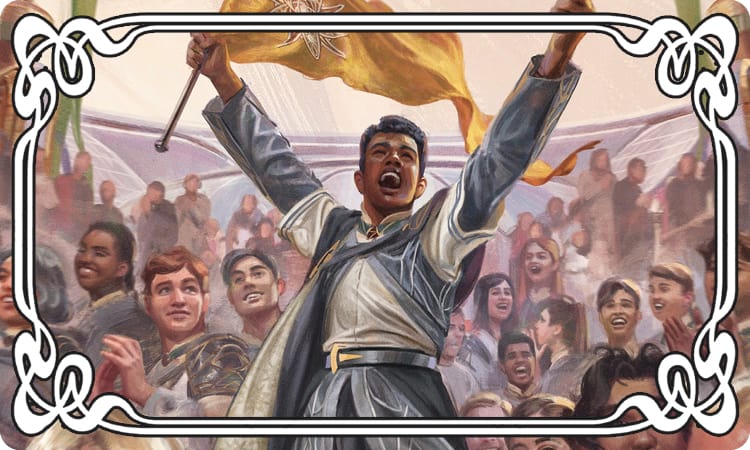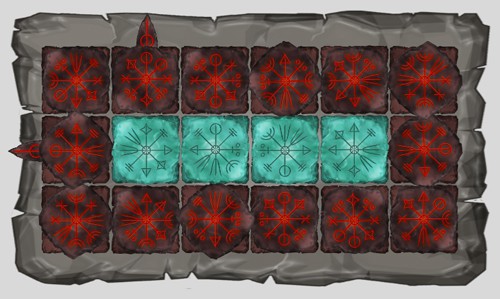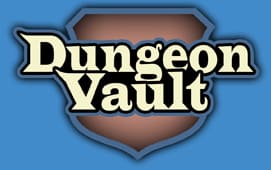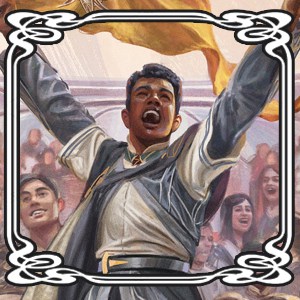
So your dungeon master decided to throw a puzzle at your party. And now it is up to your group to solve it. But where do you start? Here are my top tips for solving puzzles in Dungeons and Dragons.
1. Share the puzzle with the whole table
The number one mistake I see players making is one player hogging all the puzzle pieces while the others check out. This usually happens if the dungeon master writes the puzzle on a single piece of paper that only one player can read at a time. Often the player who is given the paper forgets about the other players and – unless players physically get up and walk around the table – they are automatically left out. Of course, this problem only happens if you’re sitting around an actual table. For virtual tabletops you can skip to the next step.
It’s not anybody’s fault, but one player hogging the puzzle does destroy teamwork and fun. So try to be aware when this happens and speak up. There’s a couple of simple ways to solve this:
- The dungeon master can provide multiple copies of the puzzle.
- If the DM did not prepare a copy for every player, you can take out your phone a take a photo of each puzzle element. But be aware that you still want to keep communicating with other players. It’s easy to get so engrossed in solving the puzzle that you forget about the other players.
- Stay ahead of the problem by asking the DM to use more puzzles that can be viewed from all sides. Here’s an example of such a puzzle:

This runestone puzzle setup can be viewed and interacted with from all sides encouraging cooperative play.
2. Identify the type of puzzle you are solving
This step may seem unimportant but I promise you it will make a world of difference. There are a lot of different puzzles in dungeons and dragons. But they all range from ‘vague’ having no instructions to solving them to ‘concrete’ having full instructions to solving them.
Vague puzzles:
With vague puzzles you don’t know where to start. The dungeon master simply throws a situation at the players.
The best way to solve vague puzzles is to start with investigation. You simply inspect all the elements closer. Use skill checks to do so and have every party member inspect everything separately if allowed. This greatly increases your changes of gaining valuable information. If your dungeon master only allows one investigation skill check, pick the PC who is best at investigating and let someone take the help action to gain advantage.
With vague puzzles the DM usually can see some weak connection between puzzle elements that is not obvious to the players and that they could not possible reason out logically. If that seems to be the case, go for a trial and error approach. Just randomly try things to see if you can get a little more information. You can even list all the elements in a logic grid and try combining them systematically.
You third option is to use divination with these types of puzzles. If your character has powers of divination it is perfectly fare to use them. If your dungeon master balks at this because they don’t want to give away the whole puzzle at once, suggest they might give a clue about the direction to look in.
Puzzles can also be vague because there isn’t one specific solution to solving it. Any answer in the ball park will do. That isn’t very satisfying for players but you can use it in your advantage. If you see your dungeon master hesitating about allowing your solution, provide a bunch of closely related solution. One will surely fit the bill.
Concrete puzzles:
With concrete puzzles the dungeon master provides clear rules to solving the puzzle and often there is one specific answer. A jigsaw puzzle is an example of a concrete puzzle. The rules are clear and there is only one correct answer.
These puzzles can best be solved by discussing a strategy with the other players. Often, someone in your party will have an idea about what to do. Then, you can cooperatively set to solving the puzzle.
With concrete puzzles first try to solve it by using the collective party’s brain power. Only ask to roll for an intelligence check to see if you can get a hint when everyone is stuck for at least a few minutes. Of course, divination for a hint would also work here.
Also, consider solving the puzzle backwards. With this strategy you start at the end and work your way to the beginning of the puzzle. It doesn’t work with all puzzle designs but you’d be surprised how many times puzzle are more easily solved by taking a different perspective.
The reason you want to ask for a hint is because good puzzles challenge the players and their characters. With hints you still get the joy of solving the puzzle as much as you can as a team of players, but your character’s abilities are used to prevent being stuck, which is where most puzzles fail.
3. Let you dungeon master know which type of puzzles your party enjoys
Not all puzzles are well suited to D&D. The door puzzle in Lord of the Rings where Gandalf sits for hours in front of a door that says ‘Speak friend and enter’ works very well in the novel. But as a puzzle for D&D players it is terrible. The reason is that there is only one step to solving it and you either get it or you don’t. If the players don’t get it the story grinds to a halt. And if they solve if with an intelligence check all the dungeon masters work goes down the drain in one minute. That’s not satisfying for anyone.
Good puzzles are designed for the whole table to be enjoyed and have multiple smaller steps to solving them. This way, it is more likely everyone contributes AND you can use skills to solve one step without the DM having to give away the whole puzzle.
As a puzzle designer, I have created hundreds of puzzles according to these principles. And they all come in a single puzzle bundle. So consider gifting your dungeon master puzzles they can use in any campaign. It will make their lives a lot easier and benefit your group with puzzles you’ll enjoy.
By Paul Camp
Image credit: Magic the Gathering


